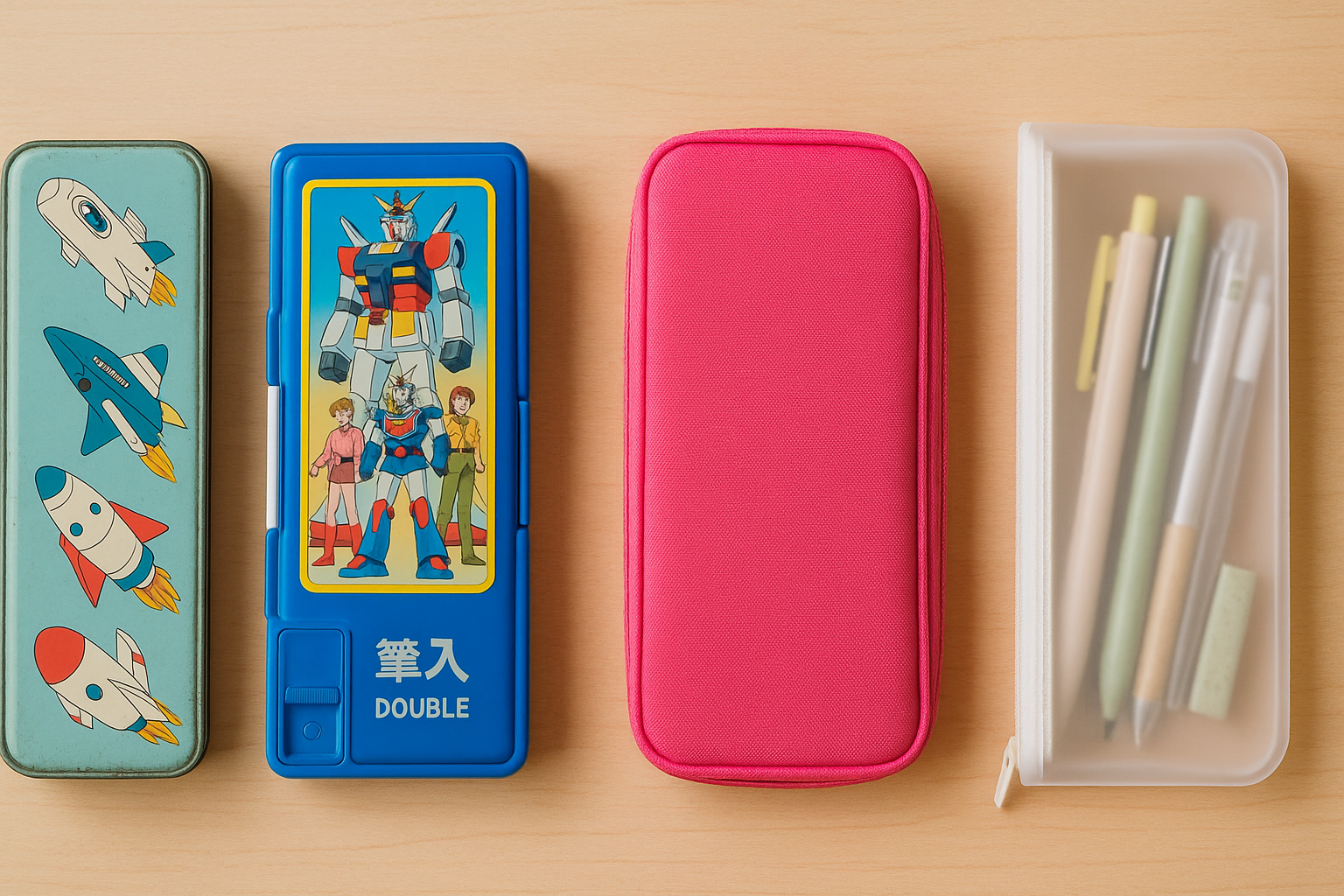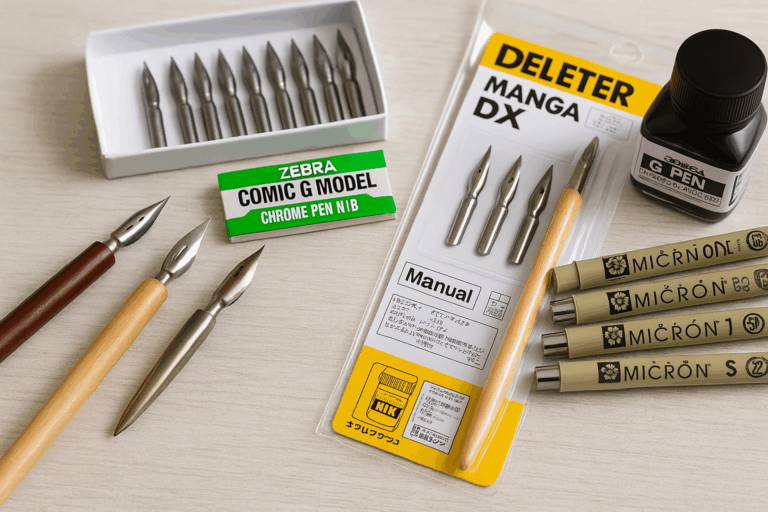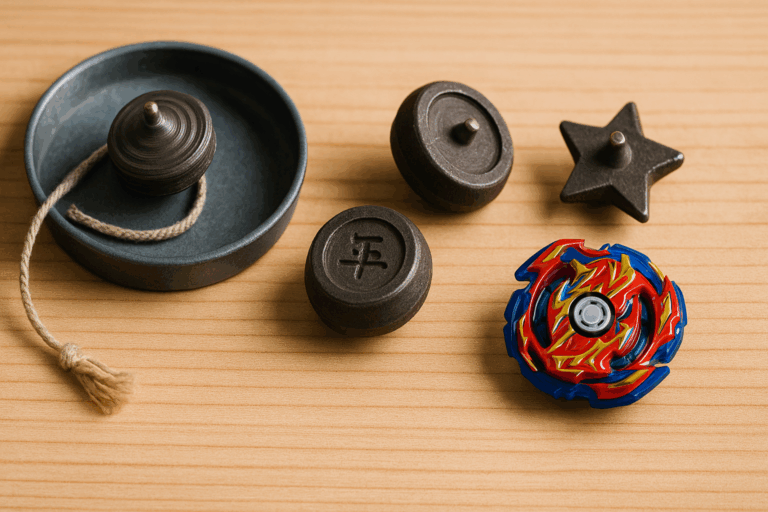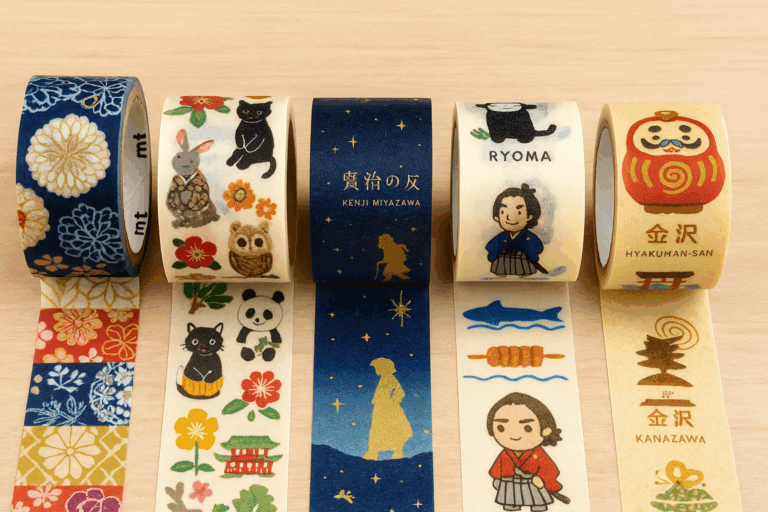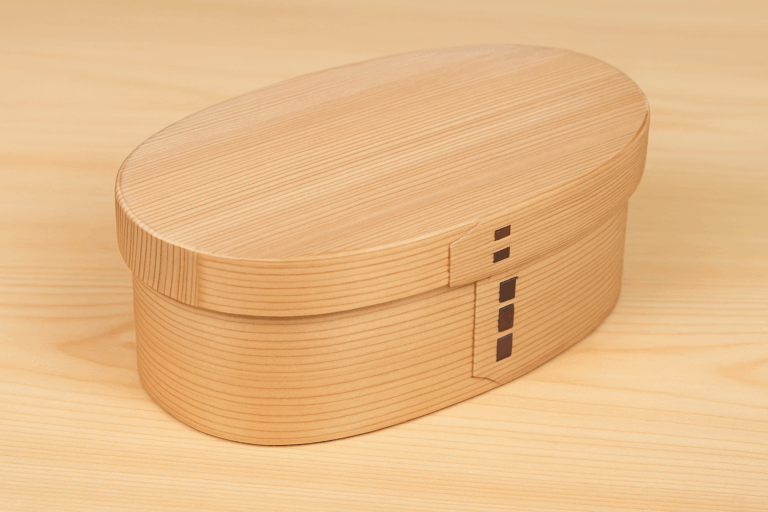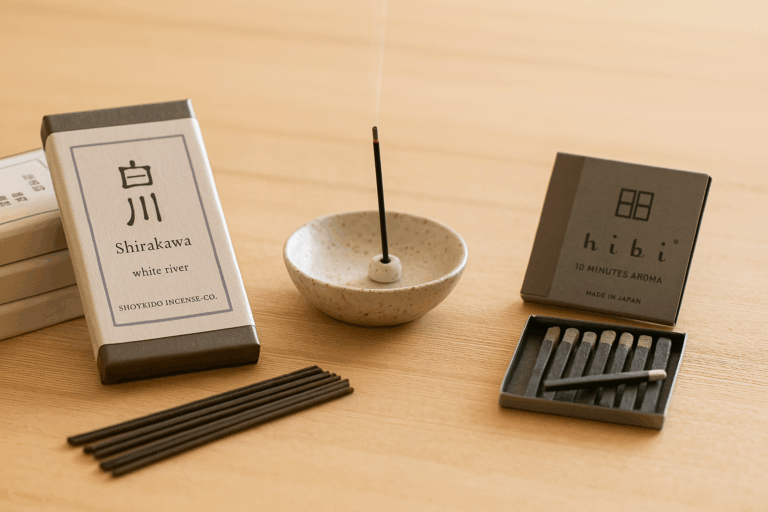The Fascinating History of Japanese Pencil Cases: From Retro Tin Boxes to Trendy Transparent Pouches
Pencil cases are more than just containers for pens and pencils—they reflect the culture, trends, and values of each generation.
In Japan, the evolution of children’s pencil cases tells a fascinating story of design, material innovation, and personal expression.
From sturdy tin boxes of the 1950s to today’s transparent pouches styled for social media, every era reveals something about how students lived, learned, and expressed themselves.
Let’s take a closer look at how these essential school items have changed across the decades.
1955–1975: Tin Boxes and Simplicity
Materials: Tin, aluminum, fabric
Features: Slide-out or double-opening designs
Popular Brands: Kutsuwa, Sun-Star Stationery
Age Trends: Tin cases were standard for elementary school children
Gender Preferences: Boys favored plain or rocket/tank designs; girls preferred floral or fairy tale prints
Historical background:This era marked Japan’s postwar recovery and the beginning of rapid economic growth. The school system became more standardized, and mass production of educational supplies, including pencil cases, became widespread. Families prioritized durability and function in everyday products, reflecting the values of a rebuilding society.
1975–1989: Plastic Innovation and Character Craze
Materials: Polycarbonate, ABS resin
Features: Double-opening cases with built-in sharpeners and ruler holders; character designs and mechanical features
Popular Brands: Kutsuwa’s “Double Pen Case,” Sun-Star, Showa Note
Age Trends: Lower elementary students used multifunctional cases; older students began shifting to simpler or fabric cases
Gender Preferences: Boys liked superhero and robot designs; girls preferred characters like Licca-chan and Sanrio
Historical background:Japan’s economy soared during this period, leading to a surge in consumer goods and youth-oriented products. Children’s stationery reflected this boom with colorful designs, mechanical gimmicks, and character branding. Pencil cases became status symbols in the classroom, mirroring the growing influence of pop culture and media.
1990–Early 2010s: Pouch Style and Personal Expression
Materials: Nylon, canvas, synthetic leather
Features: Pouch-style cases emphasizing storage capacity; shift from character designs to simple and stylish aesthetics
Popular Brands: San-X, Q-Lia, Sanrio, Loft exclusives
Age Trends: Younger students used soft material pouches with characters; older students preferred logo or English print designs
Gender Preferences: Boys favored cool, logo-based designs; girls liked cute, animal-themed motifs
Historical background:Following the burst of the economic bubble, Japan entered a prolonged recession. During this time, trends shifted from flashy, multifunctional products to simpler, more personal styles. Students began using pouch-style cases, often choosing colors and motifs that reflected their identity, marking the rise of self-expression in everyday school items.
2020s: Transparent Designs and Social Media Aesthetics
Materials: Silicone, TPU, transparent vinyl, EVA
Features: Emphasis on “showing off” contents; transparent or semi-transparent materials; customization with favorite characters or colors
Popular Brands: MUJI, DAISO, Seria, Kanmido, stationery brands from “Bungu Joshi Haku”
Age Trends: Younger students still use double-opening cases; older students shift to stylish fabric or transparent types influenced by social media
Gender Preferences: Boys prefer monochrome, functional designs; girls focus on showcasing favorite items and color coordination
Historical background:In today’s digital age, social media platforms like TikTok and Instagram heavily influence trends among students. Pencil cases are no longer just for storing stationery—they are carefully curated showcases of one’s interests, favorite characters (“oshi”), and aesthetic themes. Transparency, color coordination, and gender-neutral designs have become central, reflecting a generation that values individuality and visibility.
Conclusion: Pencil Cases as a Reflection of Shifting Childhood Culture
Far beyond being simple storage items, pencil cases serve as cultural icons that reflect the values, educational norms, and social atmosphere of each generation of children in Japan. From the mass-produced, character-driven designs of the Showa era to the functional minimalism and self-expression of the Heisei years, the evolution of pencil cases has closely mirrored broader changes in Japanese society.
Now in new era, we are witnessing a fusion of analog and digital influences, shaped by increasingly diverse values and lifestyles. As times change, pencil cases will no doubt continue to evolve—always alongside the children who use them.
[reblex id='163']